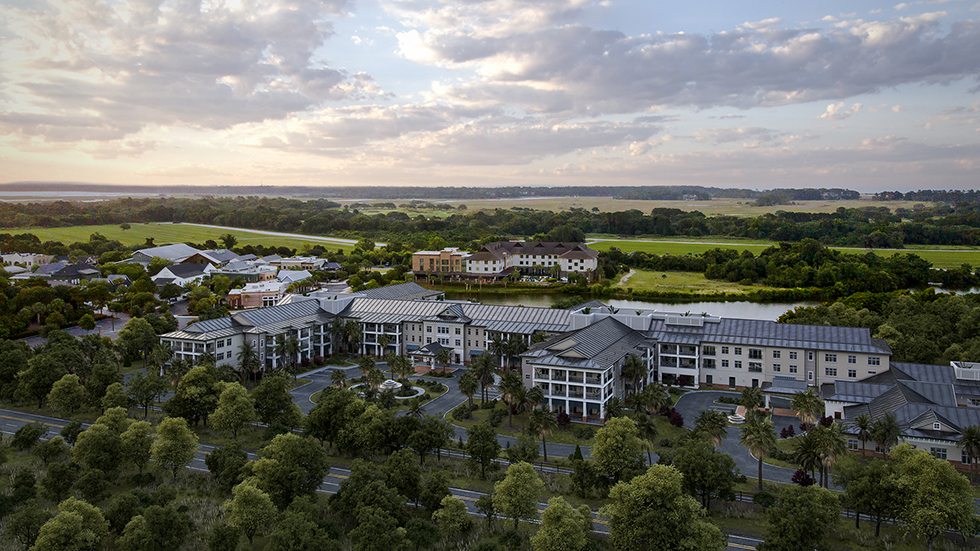By Richard Ackerman | August 17, 2021 | Seniors Housing Business
Opportunities are available in renovating old stock and building niche communities.
Upheaval in the continuing care retirement community (CCRC) market is changing the assumptions and opportunities that fueled the senior living trend for over 40 years. Today’s investors can find new opportunities at two ends of the spectrum — redevelopment of aging CCRCs and new development of smaller-scale CCRCs in upscale niche markets.
With conventional private equity financing hard to come by, creative approaches, including structuring CCRCs as nonprofits, offer a proven path to bring communities to market at both ends of the spectrum.
Factors and challenges driving the market’s transformation include:
- More people are choosing to age in place, with ready availability of home care services. That has reduced the range of services needed at a CCRC senior living model. The costly, on-site skilled nursing care component, which required communities of 300 to 500 units for financial viability, is no longer a “must have.” Assisted living is the new nursing care alternative in many cases and, when skilled nursing care does become necessary downline, favorable agreements with existing nearby facilities may meet the need.
- A competitive new generation of senior living rental communities, offering an all-inclusive lifestyle with greater flexibility, gives many seniors a new alternative to CCRCs without hefty buy-in costs.
- CCRC senior living were traditionally viewed as a hedge against healthcare expenses and as part of a senior’s overall investment plan. Many innovative financial approaches have emerged to address these factors for today’s seniors, separate from their housing choices.
Transforming distressed properties
Lifting dated, overleveraged CCRCs from bankruptcy has major benefits for investors. One example: Tampa’s University Village, a privately owned, bankrupt CCRC.
Big Rock Partners worked with the State of Florida, spearheading formation of a nonprofit entity able to secure $70 million in tax-exempt and taxable fixed-rate bonds. The nonprofit Tampa Life Plan Village Inc. then engaged BRP Senior Housing Management, a Big Rock Partners affiliate, to manage the community and provide development services.
Renamed Unisen Senior Living, the 445-unit independent living community, with a $25 million renovation underway, is poised to bring a CCRC’s advantages to a broader market. The skilled nursing component is offered off campus but with guaranteed access and lower-than-market rates negotiated with an existing nearby facility.
Acquiring the property at such a low cost basis allows the ownership to update the community, add the latest amenities and resolve longstanding issues. As a result, it can now be positioned as a much-needed, modern, middle-market product, with buy-in costs in the $50,000 to $80,000 range rather than the typical six figures for a CCRC senior living establishment.
While Unisen Senior Living is a different breed of product, it will compare favorably in terms of lifestyle, if not the quality of finishes, to the upscale senior living rental communities Big Rock Partners has developed for its own $200 million portfolio in recent years.
Engineering the CCRC’s turnaround was complex and meant tackling roadblocks on many fronts over four years: Working with the bankruptcy court, the state’s Department of Financial Services and the Office of Insurance Regulation, financial sources and residents. As a long-distressed, privately owned property, it raised the question of what happens to residents’ contracts in a bankruptcy. Working through this process with the state even prompted legislative changes that protect residents’ interests.
In the end, it proved a compelling opportunity to create value across the board, find a path forward for all parties and establish a viable model for acquiring and repurposing distressed, outdated CCRCs.
Unisen offers residents peace of mind and flexibility, through proximity to and partnerships with the area’s major assisted living and healthcare providers, including the Moffitt Cancer Center and James A. Haley VA Hospital, and plans to add assisted living on campus soon. There’s a focus on health and wellness on-site as well, with services including physical therapy, a nursing/wellness staffer and 24/7 emergency response.
The community’s extreme makeover is enhancing every aspect of its lifestyle. A prime example is a premier culinary program that lets residents choose from several casual to fine dining venues, and enjoy the convenience of a “grab and go” market, along with monthly culinary experiences and cooking classes.
As baby boomers age, with U.S. Census analysis projecting that 20 percent of the nation’s population will be 65 or older by 2029, timing is ripe for continued transformation of the CCRC model. Thoughtfully planned and executed, the nonprofit model opens new opportunities for the seniors housing industry to deliver product that aligns with today’s more active lifestyles in a financially sustainable way.
Niche markets ripe for new-gen CCRC Senior Living
The second compelling CCRC opportunity feasible in today’s market with the nonprofit model is new niche product. This allows for development of luxurious CCRCs with fewer units in upscale markets where demand is high, but where smaller populations, coupled with high land and construction costs, preclude developing a traditional CCRC with several hundred units.
Case in point: This summer, Big Rock Partners is guiding such a model CCRC to market in Kiawah, South Carolina. Kiawah Life Plan Village Inc., with around 110 independent living and assisted living units and $1 million to $2 million entrance fees, is projected for 2024 completion. BRP Senior Housing Management will manage the community’s development and operations for the nonprofit.
The community will feature the latest in wellness, technology, entertainment, dining options and support services. For residents of niche markets such as Kiawah Island, having a CCRC of this type is a welcome option. It enables them to remain in the communities they love, maintain memberships in their nearby private clubs, and be assured of the supportive environment they need to age in place.
Big picture: As CCRCs redefine retirement living, they’ll need to find new ways to attract residents and satisfy their needs. That means keeping residents as self-sufficient as possible, for as long as possible, while creating a path and relationships that ease the way to more intensive and supportive living arrangements when needed.
It’s important to recognize that seniors today are focusing on the value they can secure for their monthly fees in terms of their present lifestyle, health and happiness, as well as the long-term benefits of buying into a community that helps address future health care needs.
Richard Ackerman founded and leads Big Rock Partners, a firm focused on development of Class A, new-generation seniors housing rental communities.





